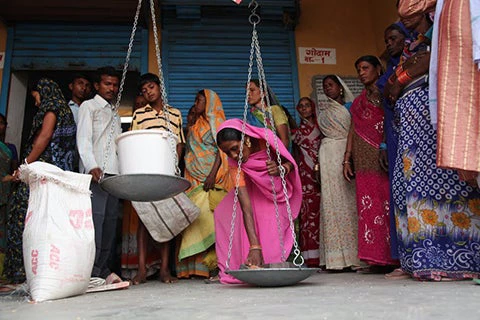Read this post in Español, Français, 中文
In recent years, we’ve seen sweeping change across the world’s economies; formal systems have broken down and become informal. My home region of South Asia is no exception: more than 90 percent of the workforce is made up of informal workers—street vendors, home-based workers, construction workers and smallholder farmers, many of whom aren’t certain of their incomes from week to week.
Government policies have not yet caught up to this reality. Most social protection systems are set up for formal employment, a concept that increasingly seems “last century.” Today, for many in India and elsewhere, there’s little chance to obtain a long-term secure job linked to a national social security system. Workers now rely on personal networks, not the government, for their own safety nets.
It’s time to acknowledge this “people’s economy” emerging from the informal sector as a force in its own right. Governments need to treat informal workers as equal participants (not simply beneficiaries) and revise social protection policies accordingly. Though government budgets for social protection schemes have increased 10 times in the past decade, most still do not reach the poorest and most vulnerable, who work outside the system.
My own organization, the India-based Self-Employed Women’s Association (SEWA), is an example of a vibrant people’s economy that provides protections to its own. SEWA is a trade union of informal women workers that gives rights and voice to 1.4 million members.
In India, 80 percent of poor women do not have bank accounts, so SEWA makes increasing financial inclusion a priority. SEWA Bank helps these women by providing savings, credit insurance, pensions and housing finance services. We’ve also experimented with cash transfers for our members. In Madhya Pradesh state, a scheme run in 20 rural villages found that unconditional cash transfers help families survive crises and can create income-earning opportunities.
People’s economies can co-exist alongside government and the private sector, and be mutually reinforcing. India’s national co-contribution pension scheme, for example, has found eager customers among SEWA members. As longer life expectancies have forced the issue of pensions into the open, many young women are finding ways to contribute. They tell me that they don’t want to become like their mothers, without a safety net in old age.
In a people’s economy, every small cooperative can have big impact. If we can multiply that, it would spread a positive message across India’s huge population: There is space for people’s own initiative, cooperation and mutual trust.
This is one of a series of posts appearing from the Bank’s 2012 South-South Learning Forum—Building Resilience and Opportunity: The Role of Labor and Social Assistance Policies— held this week in Hyderabad, India.
-------------------
Related



Join the Conversation